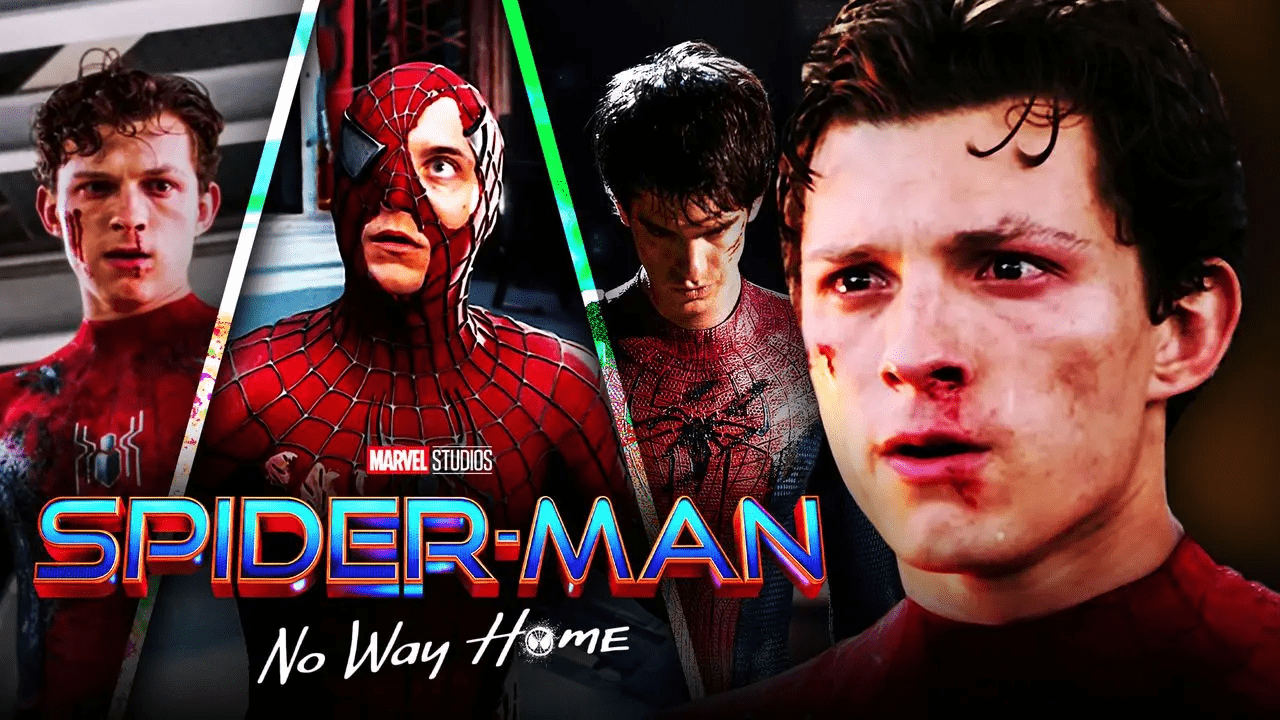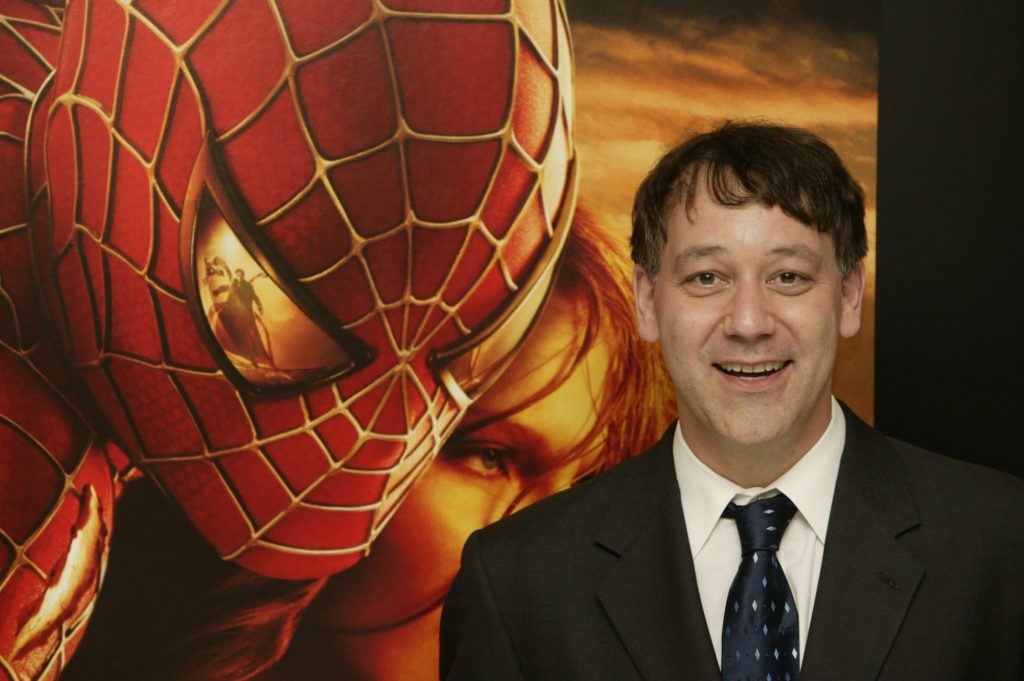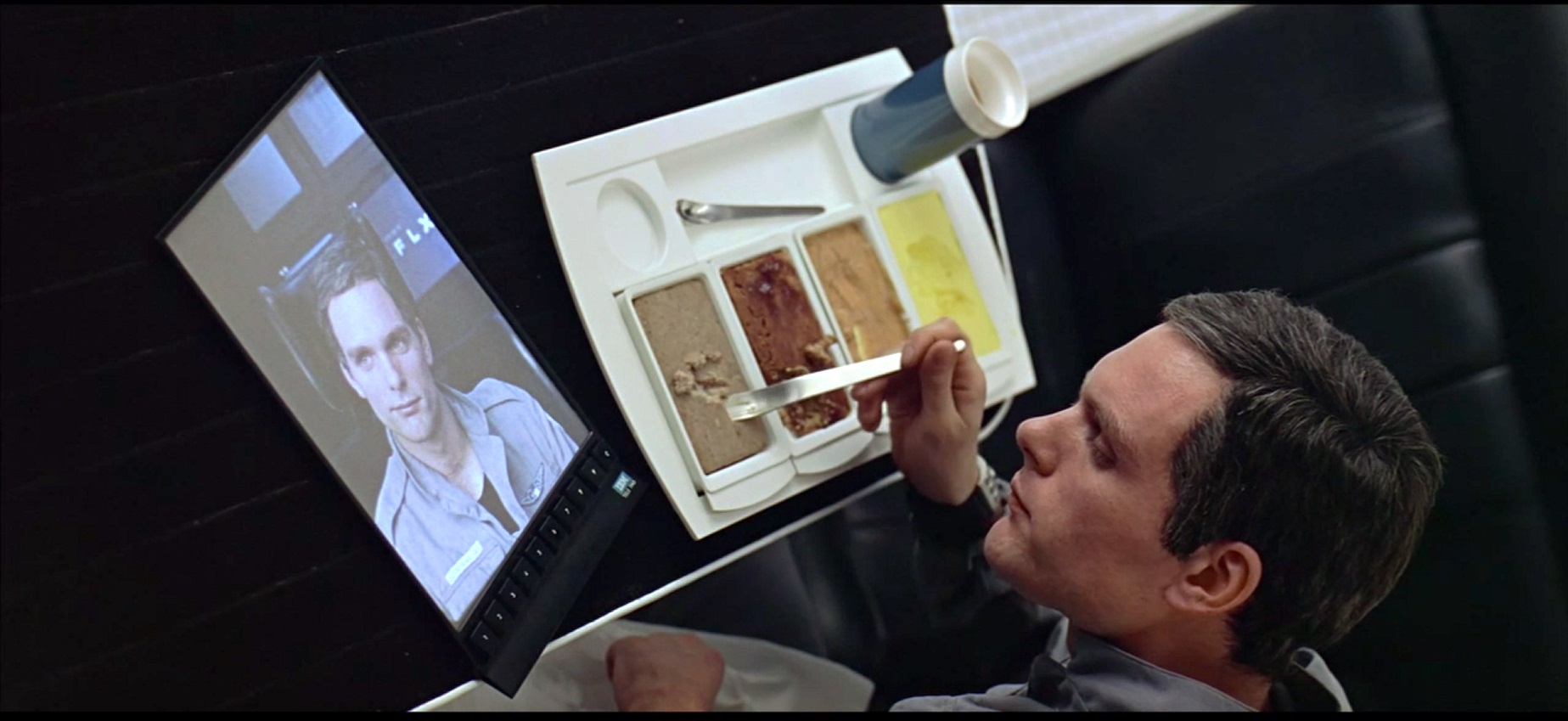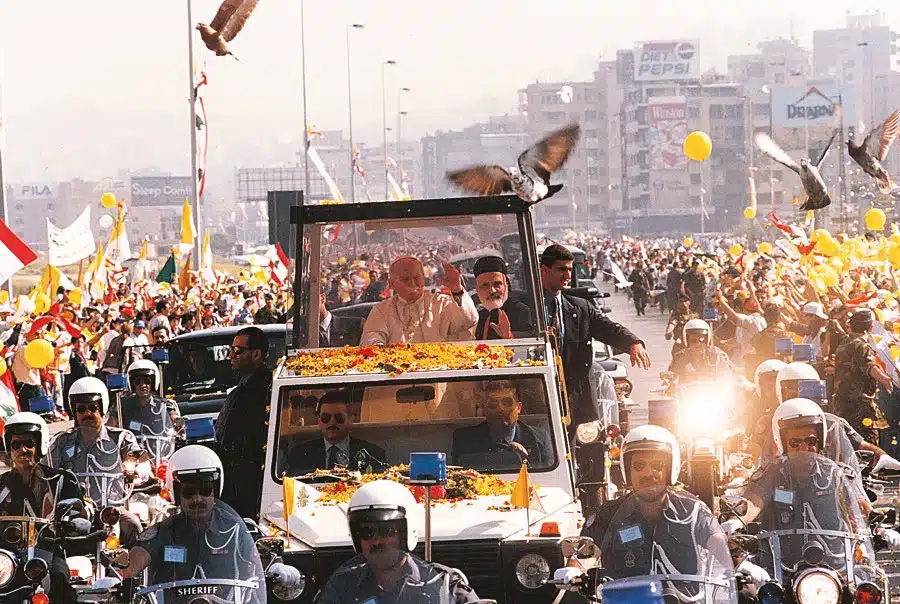
By Emad El-Din Aysha, PhD
Let me just begin by saying that I am not really an MCU fan, let alone a DCEU fan (I thought EU was European Union), and I’d avoided watching the new Spiderman movies with Andrew Garfield, out of loyalty to Tobey Maguire and Sam Raimi. So naturally I wasn’t automatically going to go out and watch Spiderman: No Way Home (2021). But, having watched Spiderman: Far From Home under some prodding from an American friend, so this seemed like a good follow-up. And in all fairness I did like No Way Home a goodly deal. Far From Home was better in my opinion, more fun and with more surprises, but this does deserve many of the accolades[1] it’s got and is a genuinely interesting superhero epic.
Of fits and false starts
The story is convoluted and confusing, as you’d expect. Peter Parker (Tom Holland) is living with the consequences of defeating Mysterio (Jake Gyllenhaal) from the previous movie, especially since Quinten Beck goes and exposes Spiderman’s identity, accusing him of killing the supposedly genuine hero that Mysterio is. (Talk about Fake News). Public opinion turns against him, with careful stoking by tabloid TV star J. Jonah Jameson (J.K. Simmons), and worse still the federal government goes after him, his friends and family, and also Happy Hogan (Jon Favreau) from Stark Enterprises, under trumped up charges. Makes you doubt the whole law enforcement and justice system in the US, if you ask me, as if they’re only interested in portioning blame to get their fair share of the budget appropriations. The government agency in question itself has some bizarre, obscure name, meant to stand in for Homeland Security if you ask me.
They get off the serious charges, thank heavens, but Peter Parker’s life is now turned upside down, having to leave his apartment permanently and stay at Happy’s overly modern crib, making it incredibly difficult to be spiderman and, worse still, making it impossible for him and his two best friends – MJ (Zendaya) and Ned Leeds (Jacob Batalon) – for their chances to go to MIT. Guilt by association. So, what does he do? He goes to Doctor Strange (Benedict Cumberbatch) to use a magic spell to make everybody forget who Peter Parker is and that way his friends can get into MIT. Then he realizes if the spell works, nobody will remember him, including his said friends. So he asks Dr. Strange to make repeated exceptions and it messes up the spell, and Dr. Strange has to find a way to contain the spell before it wreaks havoc with the fabric of the universe. Then Dr. Strange tells him all he needs to do to get his friends into MIT is talk to the institution and convince them to take them, something Peter Parker hadn’t thought of before!

Peter does just that, since the MIT Assistant Vice Chancellor (Paula Newsome) is stuck in traffic on a bridge, only to find both the Green Goblin (Willem Dafoe) and Doc Ock (Alfred Molina) from the Sam Raimi movies. (He saves the MIT person and she promises to help out his friends, calling him a true hero – more on this below). You think that this is the highpoint of the movie actionwise and while it is good, it’s confusing in terms of pacing and exhilaration. And everything before that is also jumbled. Those were problems in the previous movie and it seems to be the style of the Tom Holland and MCU movies. No appropriate balance between humour, drama and adrenalin. Even so, this is still a warm up exercise. Dr. Strange intervenes and captures Doc Ock and explains that the spell has pulled in people from other parallel universes that know Peter Parker and that it’s now his job, Tom Holland and co, to surf the internet to find any other super villains from these alternate universes. (They don’t call it the multiverse for nothing). They do just that and encounter both the Sandman (Thomas Haden Church) from the Tobey Maguire movies and Electro (Jamie Foxx) from the Andrew Garfield movies. Confusing, I know, but it gets weirder too, since Electro isn’t the geeky goofball he originally was. He’s Jamie Foxx, in the flesh. Then Peter finds a reformed Green Goblin sipping coffee with Aunt May (Marisa Tomei) as his original moral persona, Norman Osborn.
Dr. Strange thanks Peter and tells him he’s going to zap these nefarious characters back into their respective universes, Osborn included, even if means that they all die. It’s their fate, so what can you do. That’s when the movie begins to pick up, in my opinion. Peter steals the magic box containing his messed up original spell, and Dr. Strange comes after him, pulling the multiverse in with him to turn the tables on Spiderman. That action sequence is really good and evened out nicely, and with high moral stakes. One scene in particular that I liked is when Peter used geometry to calculate how to defeat Dr. Strange, saying that while magic is great maths is even better. (Remember what I said about science being the new magic, in my Robot review last time?) Peter escapes with the box and uses a fabricator at Happy’s place to help ‘fix’ these villains and so give them an alternative future.[2] (You could say fate is playing a role here because the spell brought these villains in just before they got killed by their respective Peter’s giving them a second chance in effect). One of the villains, Dr. Curt Connors (Rhys Ifans), warns him against trying to fix people since it always has consequences, something he learned the hard way when he became The Lizard. Jamie Foxx is happy the way he is, loving the rush of power and his newfound good looks, and Osborn turns evil at the worst possible time. The bad guys escape and Aunt May gets killed and the cops come in, guns ablazing, looking for Peter Parker (arresting Happy) with more media hoopla against him by the vindictive Jameson, somebody who clearly doesn’t believe in heroes. Peter is so borne down by what’s happened he begins to doubt himself and the whole utility of being a hero, if they just don’t make things worse by taking the law into their own hands.
That’s when his friends, Ned and MJ, take action. They comfort him in one of the more touching moments in the movie and Ned begins using a ring from Dr. Strange and finds the two other Spidermans, Tobey Maguire and Andrew Garfield. Yes, it keeps getting weireder. They join hands and try to finish what Peter started, making cures for the different badguys, and they go to the revamped Statue of Liberty – after endless quipping about their respective accomplishments or failures – drawing the bad guys in. It does not go well, as the box with the spell in its gets destroyed, threatening to pull the multiverses into this one – Dr. Strange comes to the rescue but only he can do so much.
It ends on a positive note in the end, however, with Peter nullifying the spell by asking Dr. Strange to make everybody forget him, including MJ. He goes to his old apartment, its empty with Aunt May being dead, but he gets his life back together again and meets Ned and MJ and you know that they’re going to get along like chalk and cheese once more. It’s almost likes its fate!
To heal a fractured nation
The key to understanding Spiderman No Way Home is the close to the final action sequence, when Jamie Foxx is speaking to the Peter Parker from his world. He talks about Peter being a good looking kid from a tough neighbourhood, fighting for the poor, and how he admired him for that. He then adds that as a consequence he figured Spiderman would be black and perhaps there is a version of him in a parallel universe that is black. At first I figured this was a reference to all the race and gender swaps going on in the entertainment world, with Superman becoming black and this or that superhero becoming a woman, etc., trying to say that a hero of the people is a hero for all whatever his race or gender. (You can’t help but notice that the person who blocked Peter’s friends from getting into MIT, the Assistant Vice Chancellor, is black and looks curiously like Kamala Harris. She certainly is elitist, with a driver. And a white dude no less who dumps her at the first sign of trouble). Then it finally hit me, after the movie was well and done. The final confrontation with the bad guys happens at a Statue of Liberty still in a state of renovation, with a giant shield obscuring the original flame. (I assume this is the shield of Captain America). The shield gets banged up and falls off, dragging the scaffolding along with it, leaving the Statue in its original form, as pristine and beautiful as ever.
That is, America returning to its true roots, as a beacon for all, welcoming all to its shores to start over. A country of second chances. If super-villains can be reformed, then anybody can, and that includes the US itself, a country that still hasn’t gotten over the 9/11 attacks – the police state-type tactics used against Peter and his friends and family – and now is in a fit of racism over migrants as well.
This helps you understand the harrowing experience of watching Aunt May aka the superhot Marisa Tomei inexcusably die like a broken rag doll by the Green Goblin’s surfboard thingy. It’s meant to help Tom Holland’s spiderman move on in his life, put the past behind him. You’d wonder ‘why’ he would need to do that, as I did, and it’s to do with loss and more importantly the blind desire for revenge, something that forces you to live in the past. The two alternate Spidermans’ pretty much tell him that, how they overcame (or didn’t) the losses that happened in their lives. Again, this is a veiled reference to 9/11, the shock and horror of it. You felt that was the case in Sam Raimi’s Spiderman 3 (2007) when it came to Peter discovering who really killed his uncle, and how he forgave him in the end. Tom Holland’s character matured as a consequence, learning to live by himself and make his own decisions instead of just following an elder person’s guide, and you felt the actor matured too. You really felt Spiderman’s hurt, positive agony and raging frustration, and Tom Holland executed it well. I should add that the mess that Tom Holland’s Spiderman makes when trying to ‘fix’ the bad guy’s personalities, almost leading to the obliteration of the cosmos itself in the final action sequence, is meant to be the damage route on by good intentions – the US war on terror and attempt to spread democracy (i.e. ‘reform’ people) by force.
Also note that the Peter Parkers working together isn’t really what saves the day. It’s the help they get from Doc Ock, the one guy who actually welcomed being cured, and also the Sandman getting convinced to side with spiderman in the final battle. I presume this is a reference to the notion that, no matter how powerful you think you are, you’re always going to need allies. Another lesson for America, in the post- post-9/11 era.
The Misgivings are All Mine
That being said, as praiseworthy and entertaining as this movie was, I still had problems with it. More on the technical level than anything else, to be fair. There’s the imbalanced approach I alluded to above, and the humour can get tedious at times. I wasn’t terribly impressed by the quips between Tobey Maguire and Andrew Garfield, talking about back pains, and I’m not much of an Andrew Garfield fan. I’ve always been a Tobey Maguire fan, long before his Peter Parker persona and I still think he’s the ultimate Spiderman, but I wasn’t too impressed here.

There are problems with the cinematography. It’s too generic and makes you feel like you’re looking at a laptop screen, with squeezed in features that force you to squint your eyes. In all fairness that’s become a common feature over the years, along with annoying things like shaky cam. What’s irritating here is how positively magnificent the original Sam Raimi Spiderman movies were. The sense of expanse, not something you get from using a camcorder. The colours were nice and loud, perfect for a Spiderman movie, but they nonetheless felt natural. The ‘texture’ of things in his movies are very real, they don’t feel flat, pasty and fake like CGI. His New York is grimy and fuming, concrete and real. Nobody knows how to balance fantasy with reality like Raimi, and he’d done it all before with Darkman (1990); still get goosebumps from that movie. This New York is too squeaky and clean, and grey, and out of perspective. It’s not ‘bad’ in itself but it has no distinctive character of its own. And cinematography is important for the sake of special effects as well, hiding CGI and making it look real. The CGI here, or the big things like the mirror worlds and the cracking of reality are really impressive, but the smaller stuff – like the Sandman effects and The Lizard – was disappointing. The wide-angled lens doesn’t allow you to look at people’s faces and get into their internal turmoil, except for Peter after Aunt May dies. The music likewise is good but generic and not involving enough. It doesn’t leave an impression on you. Once again Raimi’s movie was superior, not just at the level of movie score but also sound design. I can remember, being in the movie theatre, and ‘listening’ to the tension in the scene where Willem Dafoe is invited to lunch with Aunt May and MJ and Peter. (I love Marisa Tomei but the original Aunt May is the best, Rosemary Harris).
Other problems include predictability. You can guess what is going to happen in the next scene, many times, and while the performances are good they aren’t great. The real surprises come from the themes and the twisting, turning, developing plotline. The characters do give it substance thank heavens (particularly the friend dynamics) but it’s not a character-driven plot. The previous movie, Far From Home, is stronger in that department because Peter Parker is the focus of the events and has to develop and trust his spider senses to see through Mysterio’s lies and charm offensive. The humour was stronger in the previous movie too, more so on account of Nick Fury (Samuel Jackson). He’s sorely missed here. The bad guys fair better but they’re still not as good as they were previously, at least the Sam Raimi bad guys. (Green Goblin was always the nemesis of Spiderman in the original comics and nobody but Willem Dafoe could pull him off). In short, I like the Sam Raimi movies better. Always have, always will.
He understands comics. He knows that people are thrilled to see their beloved characters personified by people who actually ‘look’ like them or are made to look like them. Hence, Rosemary Harris and J.K. Simmons, not to mention the brutal architecture of Willem Dafoe’s face, teeth and voice. (And eyes!) Raimi also understands how the simple things are what appeal the most to viewers, such as Peter’s relationship with his uncle and the shock of seeing him killed. Norman Osborn’s deep love for his son, despite their troubled relationship; he always wants to be a role-model for him, even after he dies. The temptation of being a super villain, the pettiness of envious media men, high school troubles and puppy love, etc. It may seem mundane but that’s what draws people in. If you go for the high kill straight off, it overtaxes your synapses. You need to smooth your way into the themes through the backdoor, via characters and setting and world-building. It seems they understood that in No Way Home, and Marisa Tomei ended up paying the price! Not to mention poor Happy Hogan, losing his sweetheart. And his penthouse didn’t do him any good in the end either.
Raimi’s also a master at pacing, he knows how to drag things along with all the mundane details of this or that phase in someone’s life – Peter designing his suit, planning to buy a car to impress MJ, being the quintessential loser – then exhilarates you elsewhere. He does this to perfection in Darkman too, with the opening action sequence and the buzz you feel when Liam Neeson is doing his experiments on synthetic skin, for the betterment of mankind, which helps you understand how much he’s turned ugly on the inside when he had to become a superhero. The relationship between science and ethics is there in Spiderman too, more so in the second movie with Doc Ock, and the whole adage that with great power comes great responsibility.
This is somewhat absent in the new Marvel Studios movies, with little exceptions here and there, and this final installment of the Spiderman series is an ode to Sam Raimi’s original launching of the franchise, in my humble opinion. I’ve heard reasonably negative things about the Dr. Strange movie, made by the said Sam Raimi, but it seems studio politics is more responsible for those problems than bad direction.[3] I saw the original Raimi Spiderman movies – and Darkman – in Egypt and how fitting that you have the Statue of Liberty in No Way Home, a statue that was destined to come to Egypt to great foreigners to the Suez Canal. Guess Egypt always has been a more welcoming country, hasn’t it?!!
NOTES:
[1] “The Drinker Recommends... Spider-Man: No Way Home”, 20 December 2022, https://www.youtube.com/watch?v=ZQwGqKwELh8.
[2] The fabricator (3D printer, I presume) is another present from the dearly departed Tony Stark (Robert Downey Jr.), his legacy living on.
[3] Please see, “Half in the Bag: Doctor Strange and the Multiverse of Madness”, 9 May 2022, https://www.youtube.com/watch?v=KSvsGbarbfs.






